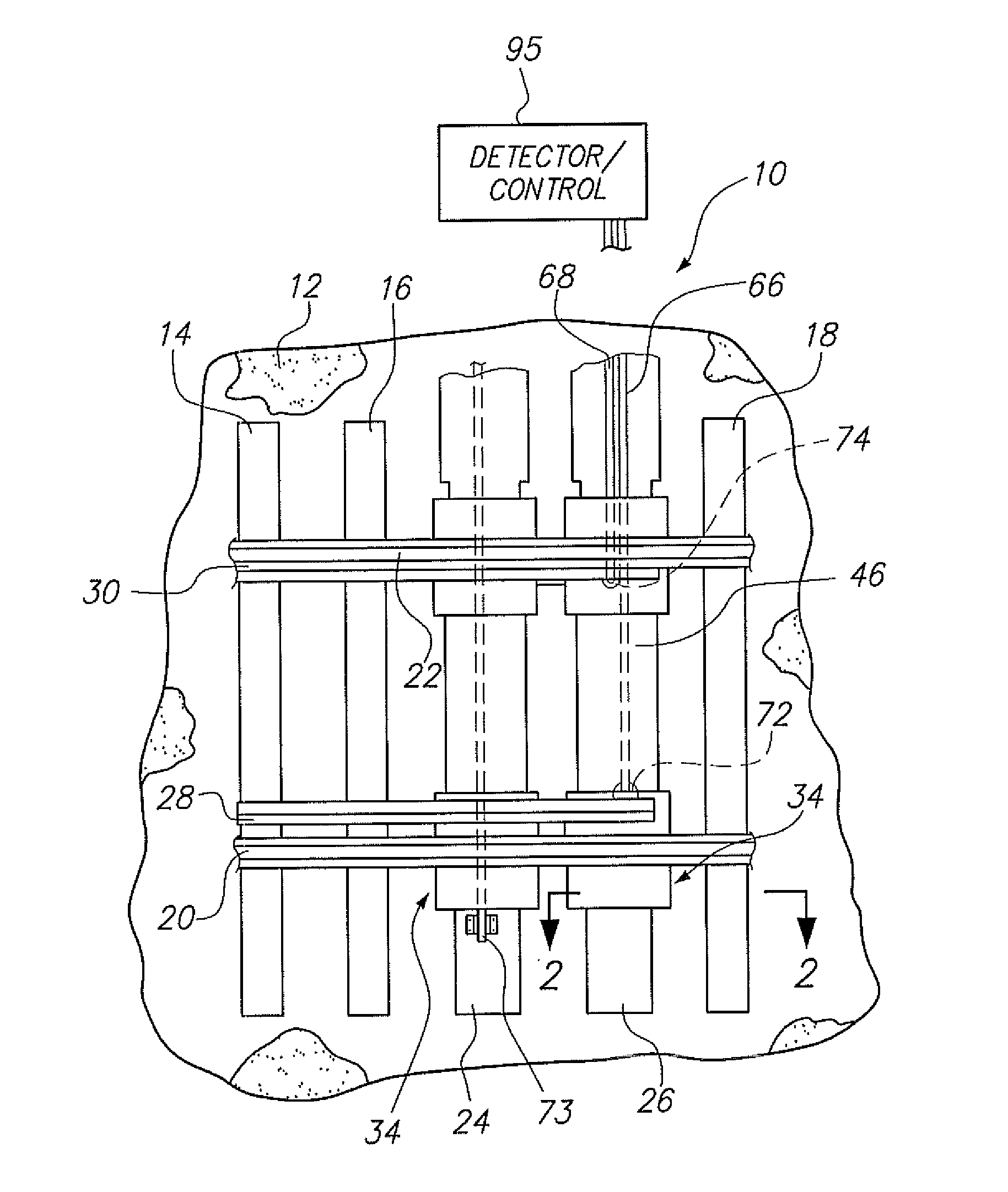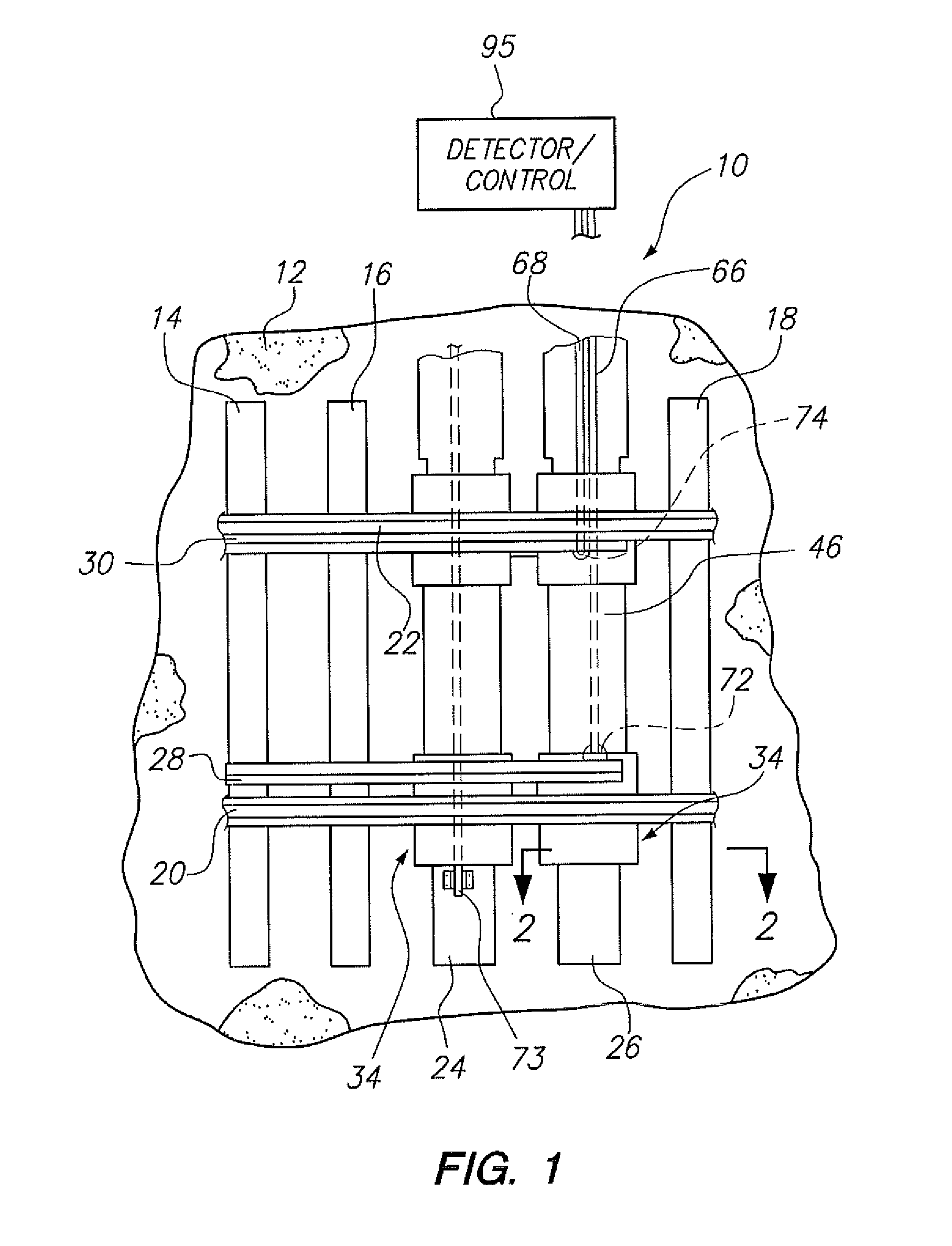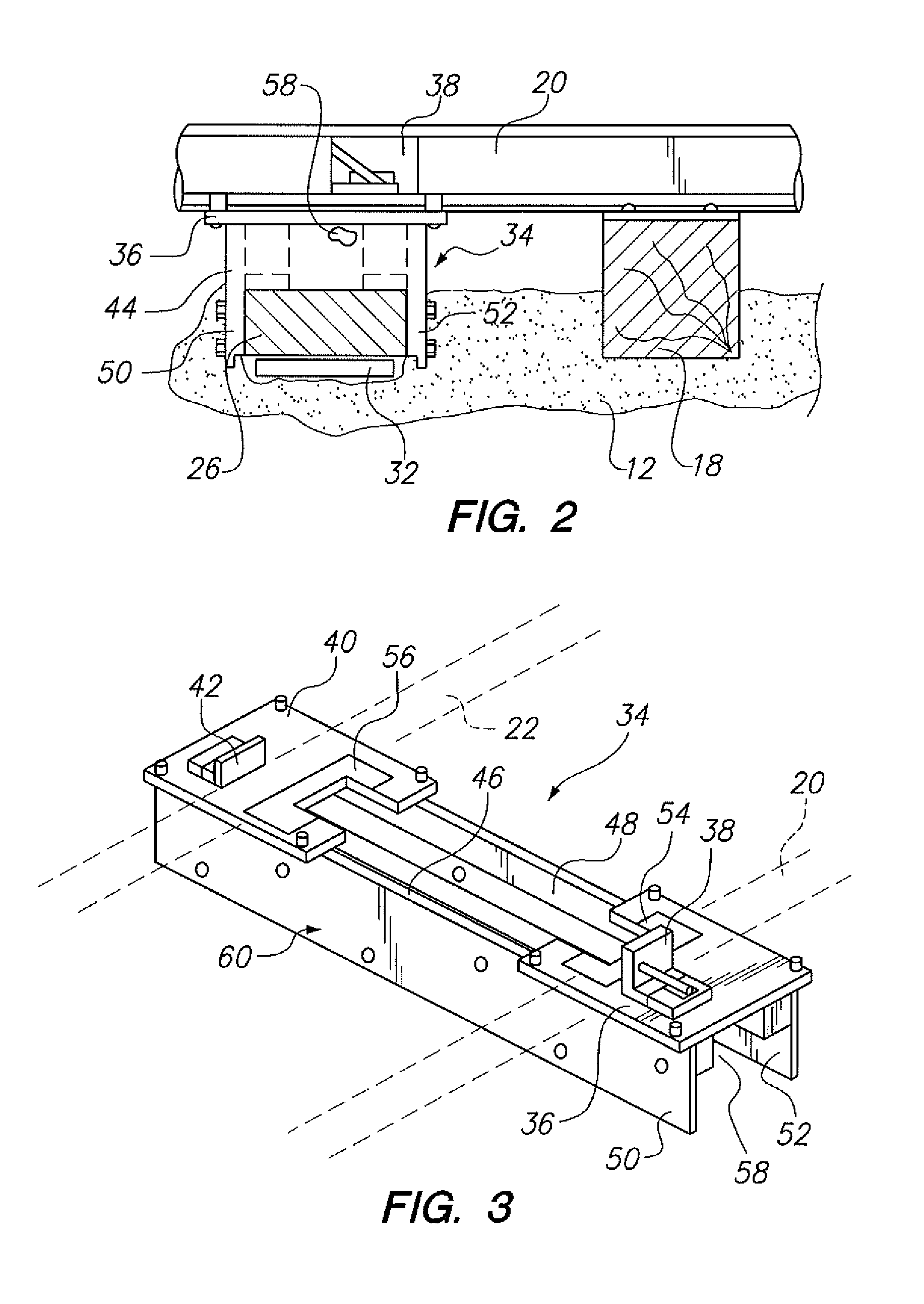Point detector overtie structure
a point detector and overtie technology, applied in railway signalling, transportation and packaging, roads, etc., can solve the problems of inability to support and stabilize the rails passing over the cribs, the malfunction of the control used to determine the proper switching of the points, and the fouling of the crib or the channel holding the indicator or the rod over time. to prevent potential damage to the indicator rod
- Summary
- Abstract
- Description
- Claims
- Application Information
AI Technical Summary
Benefits of technology
Problems solved by technology
Method used
Image
Examples
Embodiment Construction
[0030]Various aspects of the present invention will evolve from the following detailed description of the preferred embodiments thereof which should be referenced to the prior described drawings.
[0031]An embodiment of the invention as a whole is depicted in the drawing by reference character 10, FIGS. 1 and 6, in particular. With reference to FIG. 1, it may be observed that a ballast railroad bed 12 supports conventional ties 14, 16, and 18. Rails 20 and 22 are in turn supported by ties 14, 16, and 18. Bed 12 ballast is usually composed of gravel or other aggregate material which requires tamping to maintain the stability of bed 12. Also, depicted in FIG. 1, are ties 24 and 26 which form part of the apparatus 10 of the present invention. Further, moveable points or rails 28 and 30 are shown in relation to rails 20 and 22. As heretofore described, points 28 and 30 are employed in the switching of railroad cars on rails 20 and 22.
[0032]Referring now to FIG. 2, it may be observed that ...
PUM
 Login to View More
Login to View More Abstract
Description
Claims
Application Information
 Login to View More
Login to View More - R&D
- Intellectual Property
- Life Sciences
- Materials
- Tech Scout
- Unparalleled Data Quality
- Higher Quality Content
- 60% Fewer Hallucinations
Browse by: Latest US Patents, China's latest patents, Technical Efficacy Thesaurus, Application Domain, Technology Topic, Popular Technical Reports.
© 2025 PatSnap. All rights reserved.Legal|Privacy policy|Modern Slavery Act Transparency Statement|Sitemap|About US| Contact US: help@patsnap.com



